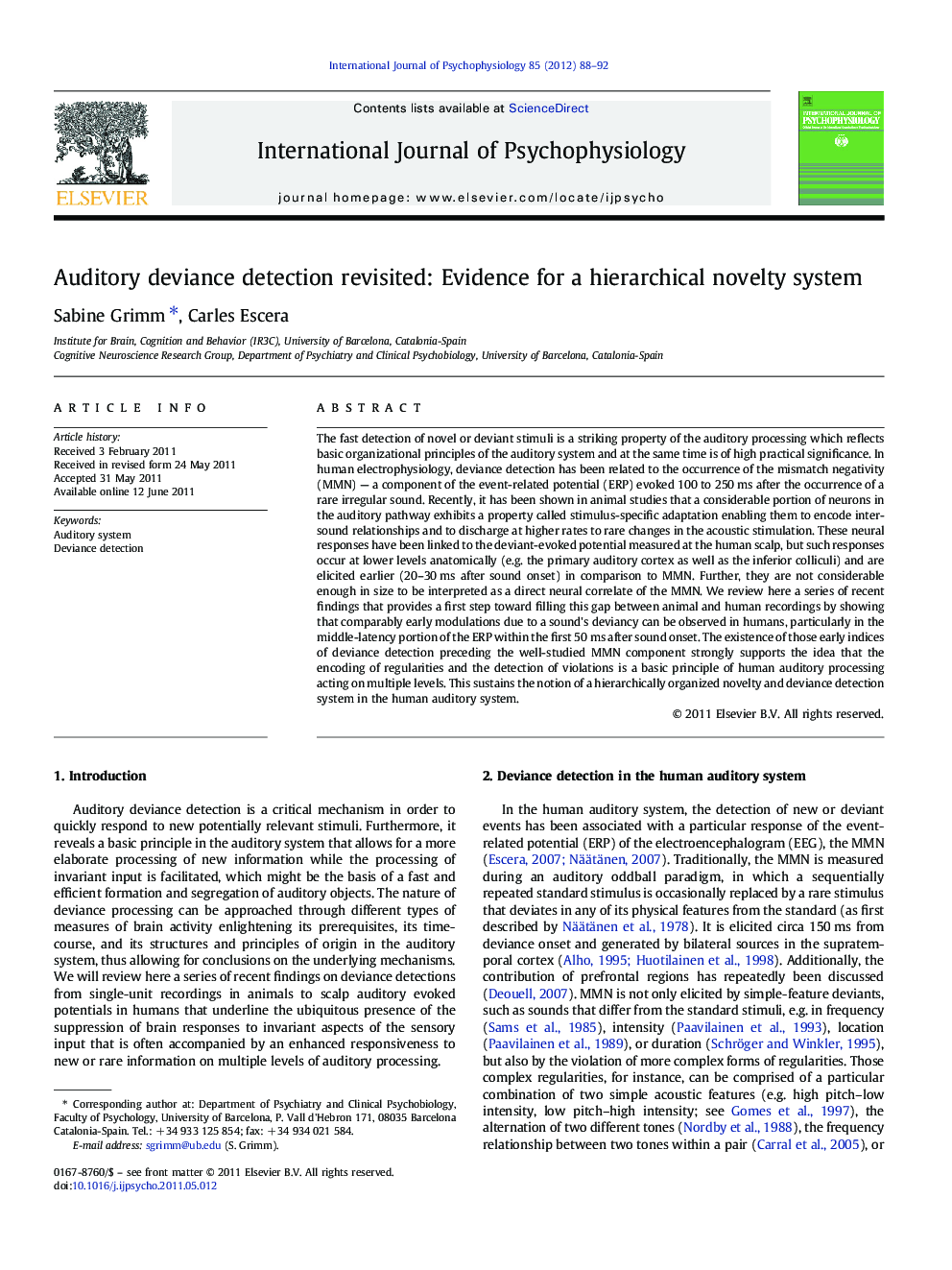| کد مقاله | کد نشریه | سال انتشار | مقاله انگلیسی | نسخه تمام متن |
|---|---|---|---|---|
| 930277 | 1474441 | 2012 | 5 صفحه PDF | دانلود رایگان |

The fast detection of novel or deviant stimuli is a striking property of the auditory processing which reflects basic organizational principles of the auditory system and at the same time is of high practical significance. In human electrophysiology, deviance detection has been related to the occurrence of the mismatch negativity (MMN) — a component of the event-related potential (ERP) evoked 100 to 250 ms after the occurrence of a rare irregular sound. Recently, it has been shown in animal studies that a considerable portion of neurons in the auditory pathway exhibits a property called stimulus-specific adaptation enabling them to encode inter-sound relationships and to discharge at higher rates to rare changes in the acoustic stimulation. These neural responses have been linked to the deviant-evoked potential measured at the human scalp, but such responses occur at lower levels anatomically (e.g. the primary auditory cortex as well as the inferior colliculi) and are elicited earlier (20–30 ms after sound onset) in comparison to MMN. Further, they are not considerable enough in size to be interpreted as a direct neural correlate of the MMN. We review here a series of recent findings that provides a first step toward filling this gap between animal and human recordings by showing that comparably early modulations due to a sound's deviancy can be observed in humans, particularly in the middle-latency portion of the ERP within the first 50 ms after sound onset. The existence of those early indices of deviance detection preceding the well-studied MMN component strongly supports the idea that the encoding of regularities and the detection of violations is a basic principle of human auditory processing acting on multiple levels. This sustains the notion of a hierarchically organized novelty and deviance detection system in the human auditory system.
Research highlights
► Change detection is an important mechanism in auditory processing.
► In the animal brain, it involves early initiating processes at multiple levels.
► In the human ERP, the mismatch negativity is associated with deviant processing.
► Recent ERP studies show earlier correlates of deviance detection < 50 ms post-onset.
► It confirms the existence of a pervasive multi-level system for deviance detection.
Journal: International Journal of Psychophysiology - Volume 85, Issue 1, July 2012, Pages 88–92